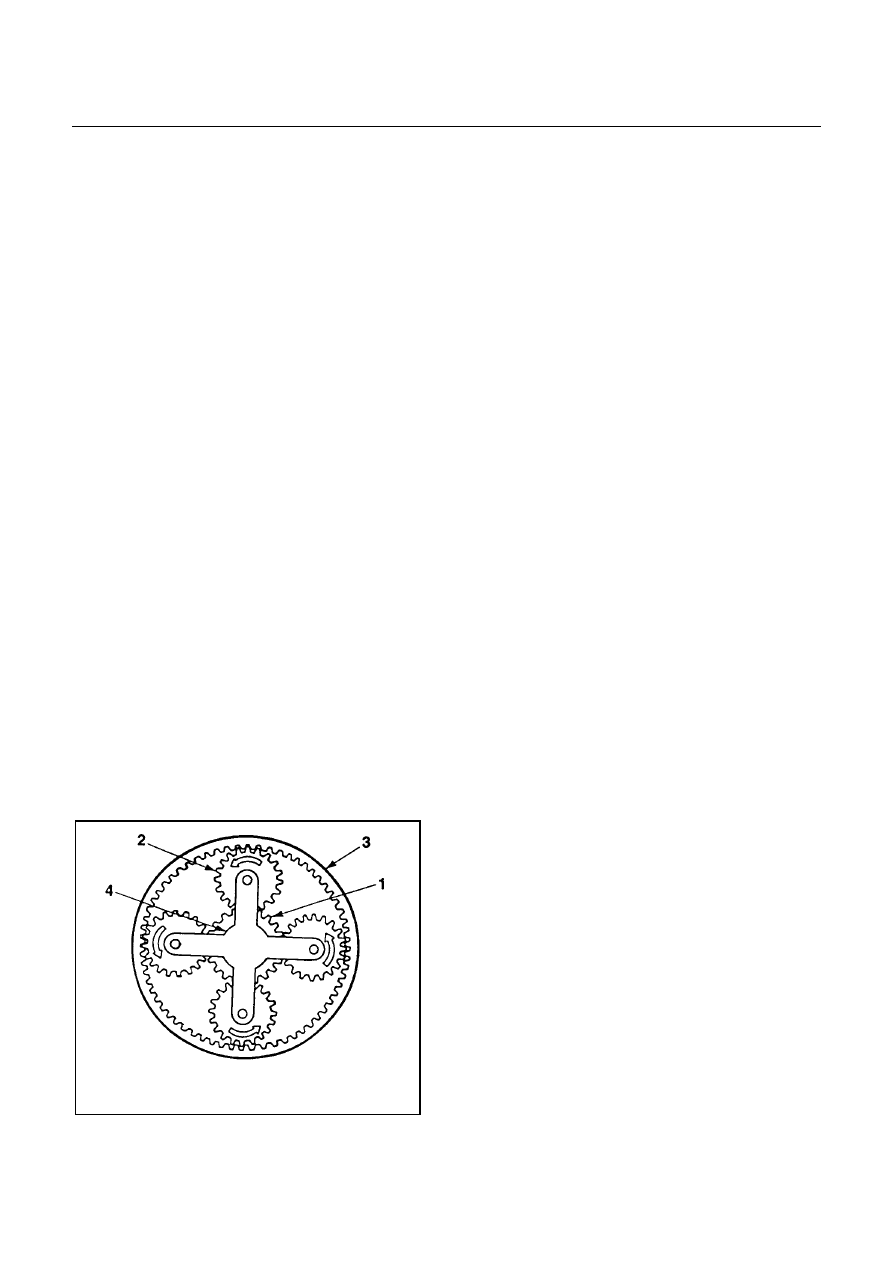Content .. 1835 1836 1837 1838 ..
Isuzu D-Max / Isuzu Rodeo (TFR/TFS). Manual - part 1837

7A1-10 CONSTRUCTION AND FUNCTION
INPUT SHAFT
•
The input shaft has some oil holes, through which lubricating ATF is supplied to the torque converter,
bearings, etc.
•
The input shaft is fitted the turbine runner in the torque converter, reverse & high clutch drum and rear sun
gear by means of the spline. Therefore, the engine driving force received by the torque converter is
transmitted to the reverse & high clutch drum and rear sun gear.
OUTPUT SHAFT
•
The output shaft has some oil holes, through which the lubricating ATF is supplied to the bearings,
planetary gear unit, etc.
•
The output shaft transmits the engine driving force from the planetary gear to the propeller shaft.
•
The front internal gear is fitted with the rear carrier assembly by spline. The parking gear is also fitted by
spline. By fixing this gear mechanically, the output shaft is fixed as required when parking the vehicle.
GEAR SHIFTING MECHANISM
•
The JR405E consists of two sets of planetary gears, three multiple plate clutches, two multiple plate
brakes and a one-way clutch. They are activated in different combinations in any of four forward and one
reverse gear positions.
Principle of gear shifting (Figure 12)
•
Planetary gears have the advantage of a compact configuration because of the way they are constructed
with a single central shaft.
•
Also, unlike the manual transmission gears that require changing of gear mesh, the gear ratio of the
planetary gears can be changed more easily by locking, releasing or rotating only some of their parts.
•
A planetary gear is made up of a sun gear (1) at its center and pinion gears (2) each of which rotates
about its own center and also along the sun gear, as shown. They are all called in the internal gear (3).
•
Also, since the pinion gears are further supported by the planetary carrier (4), they rotate as a unit in the
same direction and at the same rate.
•
As shown above, each planetary gears are constructed of three elements; a sun gear, pinion gears, and
internal gear and a planetary carrier. Gear shifting is achieved by conditioning two of the three elements
namely the sun gear, internal gear and the planetary carrier.
•
The planetary gears are locked by the clutch, brake and one-way clutch according to the gear shifting.
1. Sun Gear
2. Pinion Gear
3. Internal Gear
4. Planetary Carrier
Figure 12. Planetary Gear